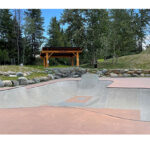Home »

SD5 Board passes balanced budget
School District No. 5 (SD5), Southeast Kootenay Trustees passed a balanced budget of $74,391,479 at a special meeting of the Board on June 17.
According to Board Chair Frank Lento, every year the board submits a “needs budget” along with the legislated balanced budget.

“This “needs budget” reflects the educational reality of district needs rather than the budgetary reality of government grants,” said Lento. “We need government to recognize this reality and to work with Boards constructively to ensure a strong public education system.”
While the Ministry of Education (MoE) has increased funding to public education under the NDP government, the Board of Education says more investment is needed. That’s the message the Select Standing Committee on Finance and Government Services (SSCFGS) received from Trustee Chris Johns on June 15.
“Government is well aware that the K-12 system is experiencing cost pressures as a result of inflation (and aging school facilities),” said Trustee Chris Johns. “This information –along with a number of recommendations – continues to be provided to them in the Select Standing Committee’s annual budget reports.”
The SSCFGS is an all-party committee of The Legislative Assembly. Each year, the committee holds province-wide public consultations on the next provincial budget. The committee is empowered to examine, inquire into and make recommendations with respect to the budget consultation paper prepared by the Minister of Finance.
In fact, the SSCFGS Budget 2019 Consultation report dedicated almost an entire paragraph to the plight of SD5, providing information based on Johns’ Fall 2018 presentation, stating: “School District No. 5 (Southeast Kootenay) described…challenges with overcapacity and the use of portables in Fernie, a city with a growth rate of 18%, the fastest in the country. The district highlighted issues at Mount Baker Secondary School in Cranbrook where almost $400,000 in emergency repairs are required for the music and drama room in order to maintain the structural integrity of the building. They advocated for a full replacement of that school.”
This year’s presentation focused on three main themes: the building of a new middle school in Fernie, substantive, major renovations for Mount Baker Secondary School (MBSS) and increased special education funding to meet all student needs across the district.
Fernie is still the fastest growing community of its kind in Canada. According to Johns’ presentation, Isabella Dicken Elementary School (IDES) will soon be installing its eighth and ninth portables to accommodate its growing population, and is projected to have 626 students enrolled for the 2020/21 school year.
Although the Board of Education is currently working with the MoE in the project development report stage to replace portables through an expansion of IDES (pictured above), a 600+ student elementary school is not practical, which is why the board is advocating for the building of a middle school in Fernie.

The Board has also pushed for replacement of MBSS for over a decade. “We’ve been spending money, millions of dollars, in the school enhancement plan, carbon neutral programs, the capital bylaws, the annual facility grant. We’ve been using those moneys, taking that away from other buildings in our communities to make sure that this building is still suitable,” said Johns.
“The replacement of a school the size of Mount Baker would be somewhere between $60 million and $70 million whereas a major renovation would be somewhere around $20 million to $30 million. So we’re now looking at renovation rather than replacement as a prudent measure to provide equal opportunities for learning throughout B.C.”
Special Education funding is another long-standing advocacy initiative of the board.
“We know that all students have unique educational needs,” said Lento. “But for approximately 13% of our students, the funding we receive is insufficient to adequately support those needs.”
According to Johns, since 2001 when the then-Liberal government deregulated a portion of special needs funding, the district has provided an additional five to six per cent annually out of the Basic Allocation Funding to support these students in their learning.
As the complexity of special education needs continue to grow, pressure on the district to subsidize these funds grow. Despite a one per cent increase to special needs funding this year from the ministry, the board will need to take an additional 6.4%, or $4 million of the basic funding allocation to minimally meet the needs of these students.
Lento says the provincial government needs to acknowledge this current reality and work with trustees to make adequate investments in the future education of our province. “We will continue to provide a Needs Budget with our annual budget, and to present to the Select Standing Committee each year as long as there are unmet educational needs in our District.”
View last year’s Select Standing Committee on Finance and Government Services Report on the Budget.
SD5







